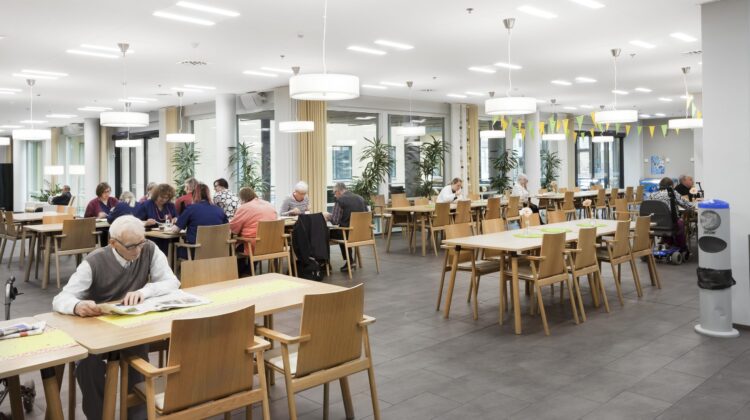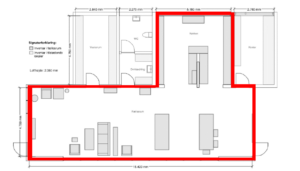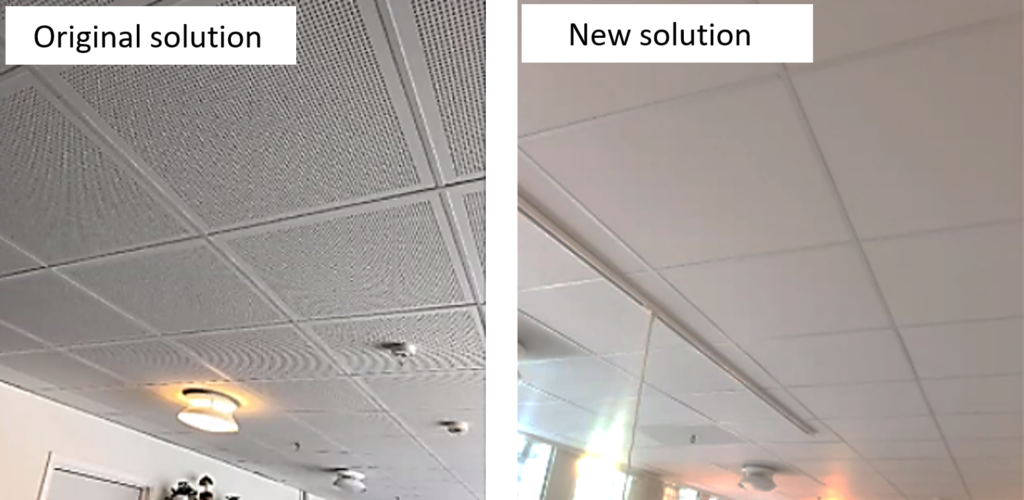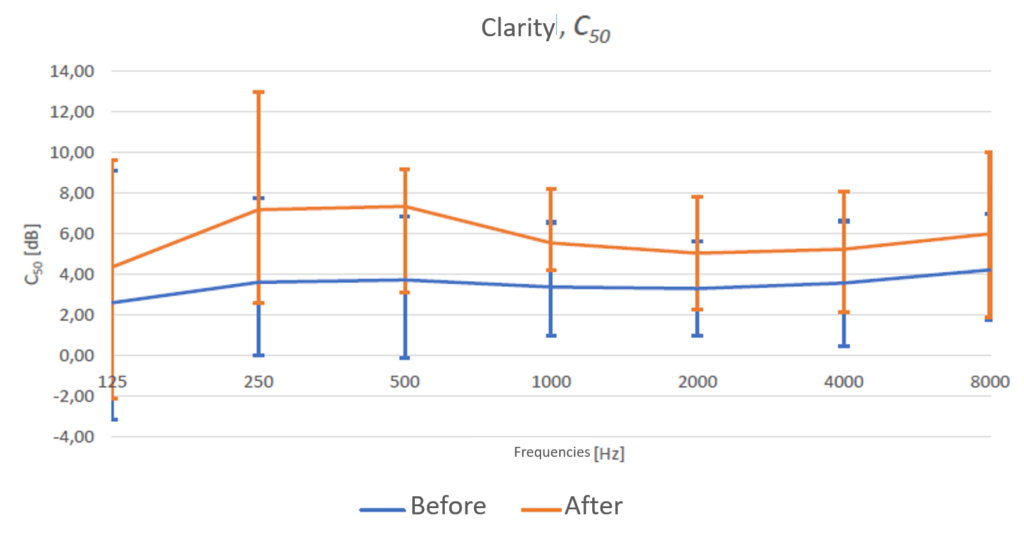
What are good acoustic conditions in elderly care? Recently, a new study in an elderly care home in Denmark was finalized. The motivation for this study conducted by the two Architectural Engineers Cecilie Søgaard Petersen and Stine Sonne Nautrup was that we see demographic changes all over the world and this also means that the people of Denmark are getting older.
Reverberation time is not enough
The short conclusion of their project was that the Danish building regulations (BR18[1]) for elderly care homes are not good enough. Today, the regulation is based on reverberation time only (T20) and the study showed that even though the facilities met the demands with the existing acoustic ceiling – the end-users found the sound environment noisy, not supporting communication, and troublesome. It was concluded that if C50 is included in the standard it will – together with reverberation time – give a better and more relevant evaluation of shared spaces in elderly care homes.
Cecilie and Stine write in their report:
As the amount of seniors increases, more people have cognitive difficulties and increasing hearing loss. This distress has the consequence, that seniors are more sensitive to sound. When nursing homes are categorized under the same terms as public housing in the BR18, it raises questions regarding whether there is an account for the sound sensitivity of seniors. It is necessary because a bad acoustic environment amount other can contribute to loneliness and depression.
Design of the study

The two engineers decided to investigate and acoustically change a shared open space in the nursing home where the people living in the home go for their meals, socialize and interact with friends, family, and staff. The intervention research consisted of changing the ceiling tiles, room acoustic measurements before and after, and interviews with the staff.
Noisy visuals, noisy conditions
The original acoustic treatment of the room consisted of perforated gypsum tiles in a suspended ceiling. The engineers commented in their report that the visual impact of such a ceiling in an elderly care facility can be very disturbing because of the irregularities of the surface. Having dementia, the ‘noisy visuals’ can cause anxiety and the feeling of ‘something is in the ceiling’.

The original treatment met the demands of the building regulation but despite this, the staff expressed their concerns:
… some of them (the elderly) get confused and cannot find peace enough to sit at the dinner table… they cannot concentrate enough to eat because of the noise.
It is not only the elderly who struggle:
…I experience the room as being very noisy. When leaving my job when I’m off, I can easily feel very dizzy and tired because of all the noise.
The engineers chose to change the ceiling tiles into a porous glass wool solution[2] that has a cleaner look and was expected to perform better acoustically both regarding auditory strength and speech clarity.
Acoustic results
As mentioned the facilities met the building regulation before the intervention. The reverberation time was acceptable on paper (with fine margins!) but since the room is open plan and many different activities happen at the same time the end-users complained. Stine and Cecilie decided to investigate more than just reverberation time and measured (Reverberation Time (T20)), Early Decay Time (EDT), Speech Transmission Index (STI), and Speech Clarity (C50). (Read more about acoustic descriptors here). They chose to investigate all these parameters to see what is most important when evaluating a shared space considered to be a multi-talker environment for elderly people.
The measurements showed almost no difference before/after on STI and since the standard EN 60268-16 is based on normal-hearing adults it is not applicable for elderly care because of age-related hearing loss.
The results for reverberation time (T20) and Clarity (C50) were as follows:


Does it make sense?
One could question if the investment in a new ceiling treatment should be prioritized when seeing the measurements. Is it worth it? The room meets the demands! If the report didn’t include statements and interviews with the staff it would be hard to argue that ‘YES’ we need an acoustic refurbishment. The staff was very clear in their communication to the engineers – they SAW a problem, they KNEW that the shared space was not supporting the activities and they FELT the issues themselves.
If we want to make sure that rooms and buildings support the people using them and living in the facilities – research needs to include not just ‘cold’ data like measurements – we need to listen to the end-user needs first of all.
We can now hear each other even if the TV is on or if someone is in the kitchen (…) It is not as noisy as before – the positive change is massive.
The engineers concluded in their report that C50 should be included in the building regulations for elderly care facilities in spaces like these because the change in this parameter was exactly what the end-users reacted to and gave feedback on. Several parameters in standards in general for multi-talker environments are already seen in standards for offices and should be investigated more.
___________________________
For more information on the project, please contact the Architectural Engineers Cecilie Søgaard Petersen and Stine Sonne Nautrup
___________________________
[1] Danish Building Regulation of 2018 – Bygningsreglementet 2018 (BR18)

